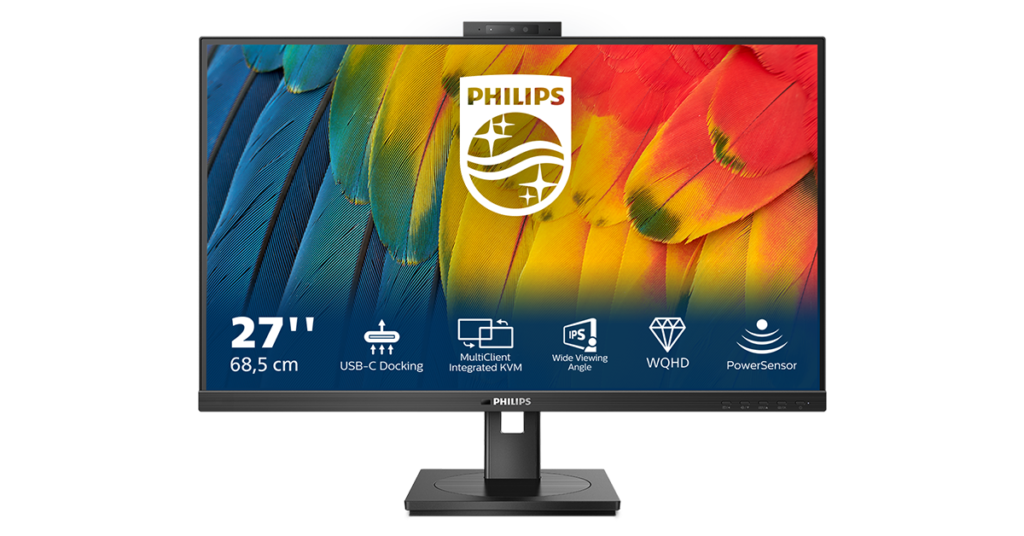“Recommends” award and 5/5 for the Philips 27B1U7903 @ Essential AppleUser Magazine (UK)
Comments Off on “Recommends” award and 5/5 for the Philips 27B1U7903 @ Essential AppleUser Magazine (UK)
Essential AppleUser Magazine, a digital magazine from the UK focussed on Apple products and related peripherals recently published a review of the Philips 27B1U7903 in their “Issue 42”. The monitor received 5/5 stars and “Essential AppleUser Magazine Recommends” award!
For more information about the Philips 27B1U7903 monitor, please check here
PROS
+ Fantastic colours
+ Excellent build quality
+ Connectivity options
(+) 1.07 billion colours
(+) Excellent viewing angles
(+) MiniLED backlight with 2,304 dimming zones
(+) USB-A ports, Gigabit Ethernet and second Thunderbolt 4 port for daisy-chain
(+) Versatile stand with height, rotation and portrait adjustment
CONS
– Costs a bit
(-) Built-in speakers aren’t great
Verdict: „An outstanding display that’s perfect for design, video editing and more. […] Philips’ 27B1U7903 4K satisfies on pretty much every level. It’s wonderful for design. Colours are clear and bright. […] It has excellent connectivity options, and is one of the first monitors featuring Thunderbolt 4 with USB4 compliance. […] It’s a great screen that will serve you well whatever use you put it to.“
Please find the full article here
“Likely to put a smile on your face” – 5/5 stars & “Editor’s Choice” award for the Philips Evnia 42M2N8900 @ GamesRadar+ (UK)
Comments Off on “Likely to put a smile on your face” – 5/5 stars & “Editor’s Choice” award for the Philips Evnia 42M2N8900 @ GamesRadar+ (UK)
GamesRadar+, a gaming-focussed website from the UK’s renowned Future Publishing house with about 42 million monthly visits, recently published a great review of the Philips Evnia 42M2N8900. The monitor received 5/5 stars and the website’s “Editor’s Choice” award!
For more information about the Philips Evnia 42M2N8900 monitor, please click here
PROS
+ Fantastic contrast and colours
+ Immersive Ambiglow lighting
+ Versatile size
(+) 138 Hz refresh rate
(+) KVM switch
(+) 90 W USB-C docking station
(+) AMD FreeSync Premium
(+) 0.1 ms GtG response time
(+) HDR10
(+) Two 10 W speakers with DTS sound
(+) Included remote control
(+) Comprehensive OSD
CONS
– Not the brightest OLED around (450 nits peak brightness)
Verdict: „As far as big screen gaming monitors go, the Philips Evnia 42M2N8900 is one of the best. Not only does it take to the stage with an exceptional 42-inch OLED panel and convenient features like USB-C hub abilities, but its integrated Ambiglow lighting provides an immersive lightshow as a visual cherry on top. […] Out of every gaming monitor I’ve tested recently, the Philips Evnia 42M2N8900 is the one that’s most likely to put a smile on your face. It’s big, provides beautiful bold OLED visuals, and pulls off an extra level of immersion thanks to its integrated Ambiglow lighting system. If you’re not looking for the fastest refresh rate around, it’s going to serve incredibly well as a UHD gaming PC panel, not to mention its specs line up pretty nicely with PS5 and Xbox Series X. […] I honestly think that the Evnia 42M2N8900 packs enough of an OLED punch laced with great features to justify its price. You’ll be hard pressed to find a screen that follows this exact recipe for a similar price, and Philips has created a compelling reason to opt for a monitor over a smaller traditional screen.“
You can find the full review here
Philips 27B1U5601H got an 85/100 from CHIP, important IT publication in Turkey
Comments Off on Philips 27B1U5601H got an 85/100 from CHIP, important IT publication in Turkey
CHIP, one of the most important IT publications in Turkey recently published a review on the Philips 27B1U5601H, getting a rating of 85/100. Some of the affordances this monitor offers are an ergonomic stand, quality built-in speaker and microphone and many ports, which make this monitor one of the best choices for work both at home or in the office. For more information about the Philips 27B1U5601H monitor, please click here
PROS
+ Vivid and sharp panel
+ Ergonomic stand
+ 5MP webcam
+ Quality built-in speaker and microphone
+ Wide range of connection options
+ KVM switch
(+) PowerSensor and LightSensor
(+) PiP and PbP modes
(+) LowBlue mode
(+) Rich USB hub with USB-C with 100 W PD, RJ45 input, 4-port USB hub
CONS
– The stand takes up too much space
– No HDR
Verdict: „Yes, to summarise, the Philips 27B1U5601 is a nice option for general office work and playing casual games. The screen is crisp and sharp enough, and it has plenty of ports, including USB-C, which will be needed in a working environment. There’s also a built-in webcam, speakers and microphone, all important components that can save a worker a lot of extra expense. Moreover, these are not just added components, they are very high quality. In this sense, it is a complete monitor.“
Please find the full article here